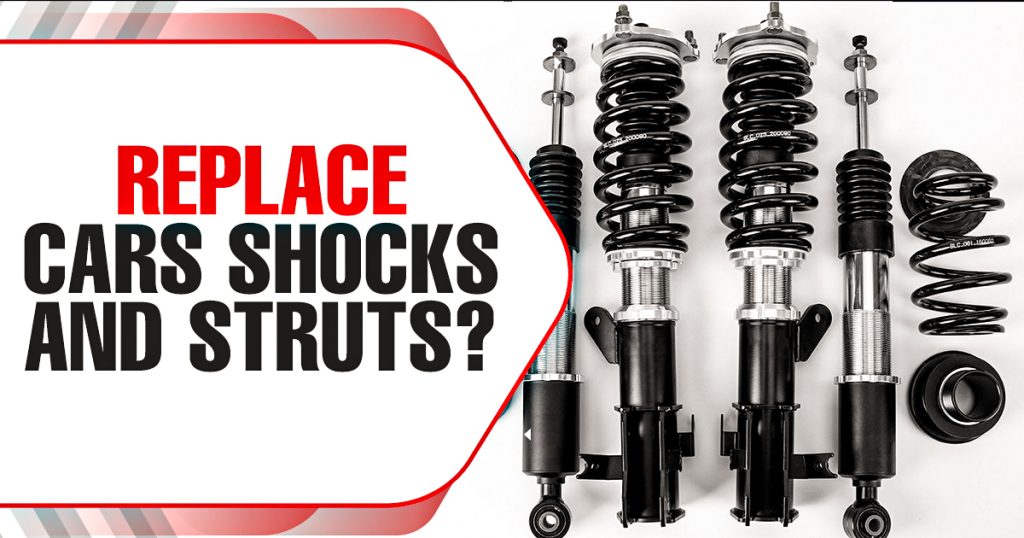Your car’s shocks are an essential part of your suspension system, and they play a vital role in keeping your car handling properly and protecting it from damage. If your shocks are worn out, you’ll notice a decrease in your car’s handling performance and ride quality. You may also experience strange noises when you drive over bumps or uneven surfaces.

Image: www.autostore.pk
Replacing your shocks isn’t a difficult job, but it does require some specialized tools and knowledge. In this article, I’ll walk you through the steps on how to install shocks on a car.
What You’ll Need
- New shocks
- Socket wrench set
- Wrench
- Jack stands
- Jack
- Spring compressor
Step-by-Step Instructions
1. Safety First
Before you start working on your car, it’s important to take some safety precautions. Park your car on a flat, stable surface and engage the parking brake. Allow the car to cool down if you’ve been driving it recently.
2. Remove the Wheels
Loosen the lug nuts on the wheel that is attached to the shock that you’re replacing. Do not remove them completely. Lift the car with the jack and place it on the jack stands. You’ll need to have the car raised so that the wheel is completely off the ground.
3. Remove the Brake Caliper
Using a wrench, remove the bolts that attach the brake caliper to the steering knuckle. Carefully lift the brake caliper off the rotor and suspend it from the frame or suspension with a bungee cord.
4. Remove the Sway Bar Links
Many shocks are connected to the sway bar using a link. To remove the link, simply unbolt it using a wrench or a socket wrench.
5. Remove the Strut Assembly
The shock is not typically replaced alone. Instead, the complete strut assembly that includes the shock, spring, and other components is replaced together.
To remove the strut assembly, you’ll need to use a spring compressor to compress the spring and provide clearance to remove the strut.
6. Install the New Strut Assembly
Once the old strut assembly is removed, you can install the new one. First, remove the retaining nut from the top of the strut and slide the old assembly out of the car.
Next, place the new strut assembly into its position and finger-tighten the retaining nut at the top. Bolt everything back together in the reverse order of disassembly, torqueing all bolts to specification.
7. Reinstall the Wheel
Once the new shock is installed, you can reinstall the wheel. Hand-tighten the lug nuts and then tighten them completely using a torque wrench with an appropriate amount of torque.
8. Repeat on the Other Side
Repeat the process on the other side of the car to replace the other shock.
Tips and Expert Advice
- Make sure that you have the right tools before you start working.
- If you have any doubts about your ability to install shocks, take your car to a mechanic.
- If replacing the shocks yourself, take your time and be careful.
- If possible, have someone help you with the installation.
![How Do I Know If My Car Has Shocks Or Struts? [Explained]](https://shockabsorberpro.com/wp-content/uploads/2021/12/Car-Shocks.png)
Image: shockabsorberpro.com
FAQs
Q: How often should I replace my shocks?
A: Shocks should be replaced every 50,000 to 100,000 miles, depending on your driving habits and the condition of your roads.
Q: What are the signs of worn-out shocks?
A: Signs of worn-out shocks include decreased handling performance, poor ride quality, and strange noises when driving over bumps.
Q: Can I install shocks myself?
A: Yes, you can install shocks yourself if you have the right tools and knowledge. However, if you have any doubts about your ability to do so, take your car to a mechanic.
How To Install Shocks On A Car
Conclusion
Replacing your shocks is a relatively straightforward job that can be completed in a few hours with the right tools and knowledge. By following the steps in this article, you can save yourself the cost of having a mechanic do the job for you.
Are you interested in learning more about car maintenance and repair? Check out our other articles on our website.

/GettyImages-1303637-two-way-mirror-57126b585f9b588cc2ed8a7b-5b8ef296c9e77c0050809a9a.jpg?w=740&resize=740,414&ssl=1)



